Sloths
Best known for their super slow movements and cute but creepy faces, sloths are a unique kind of mammal exclusive to Southern and Central America. There are two different families of sloths—two-toed sloths and three-toed sloths. Aside from the number of claws they have, the two types can also be distinguished via their faces. Two-toed sloths have bigger eyes and a lighter, more tousled coat, while three-toed sloths have the famous dark facial markings that make it look like they’re always smiling.
Between the two families, there are six total species of sloth. They live mainly in South America in Brazil, Venezuela, Colombia, Peru, and Bolivia. However, there are some that live further north in Costa Rica and Panama. Sloths stick to one type of habitat: lowland rainforests. They spend the vast majority of their time in the rainforest canopies, using trees as their food and shelter.
Sloths have an uncommonly slow metabolism. When a sloth eats, the time its body takes to convert that food source into energy is far longer than the average mammal of its size. Because of this and their low-calorie diet of leaves, sloths are always low on energy, so they need to be conservative in how they use it. They move slowly, stay within a small home range, and only relieve themselves once a week.
Another reason for their slowness is their eyesight—despite living in trees, sloths have such poor eyesight that they’re almost blind in certain levels of light. To avoid falling from the trees too often, they move slowly to make sure their footing is secure. This isn’t a foolproof strategy, however, since sloths fall from trees around once a week. Luckily, they can fall up to 100 feet without getting injured.
When a female sloth has a baby, it crawls up onto her stomach and clings to her as soon as it’s born. Since sloths barely have any energy to spare, the mother produces milk only when the baby needs it and begins introducing her young to leaves as soon as a week after birth. The baby samples the leaves from its mother’s mouth, learning the types that are safe to eat.
Sloths play an integral part in the survival of some of their rainforest neighbours. Their fur, which has cracks in the hairs to let algae take hold and grow, is home to a whole ecosystem of tiny insects. The algae growing in their fur sustains a range of species like moths, beetles, cockroaches, and worms—and hundreds of individuals can be found living on one sloth. Protecting sloths also means protecting South America’s rainforests.
What is a sloth’s scientific name?
There are six species of sloth, all with their own scientific names. They were previously all classified under the family Bradypodidae, but later research showed so many differences between two-toed and three-toed sloths that the two-toed sloths were given their own family, Megalonychidae. Scientists have determined that there are four distinct species of three-toed sloths and two distinct species of their two-toed cousins. Here are their scientific names:
- Pygmy three-toed sloth: Bradypus pygmaeus
- Maned three-toed sloth: Bradypus torquatus
- Pale-throated three-toed sloth: Bradypus tridactylus
- Brown-throated sloth: Bradypus variegatus
- Linnaeus’s two-toed sloth: Choloepus didactylus
- Hoffman’s two-toed sloth: Choloepus hoffmanni
Are sloths endangered?
The IUCN Red List currently categorises four of the sloth species as least concern, one species as vulnerable, and one species as critically endangered—the pygmy three-toed sloth. The maned three-toed sloth was previously listed as endangered because their range was thought to be very restricted. However, new data found more areas where this species lives, and they were recategorized as vulnerable.
The pygmy three-toed sloth, however, does have a truly restricted range. They live on a single island 17 kilometres off the coast of Panama that has a total area of just 4.3 square kilometres. This is the only place on the planet where these sloths are found, which makes them extremely vulnerable to geographic disturbances and human development.
Human development is the main threat to all sloth species—their rainforests are being cut down. Poaching is also a threat because there’s a demand for sloths in the illegal pet trade.
Where do sloths live?
All species of sloth live in South and Central America in various lowland rainforest areas. This includes countries such as Bolivia, Brazil, Colombia, Costa Rica, Ecuador, Panama, Peru, Honduras, and Venezuela.
All species of sloth live in lowland rainforests that have a diverse range of vegetation including many types of trees for sloths to live in. Sloths stay in the canopies of trees for the majority of their time, including eating and resting. The only time they venture down to the ground is to relieve themselves, which they do once a week.
Threats
While most species of sloths are not considered endangered, they all face threats such as habitat destruction and poaching that contribute to their declining numbers.
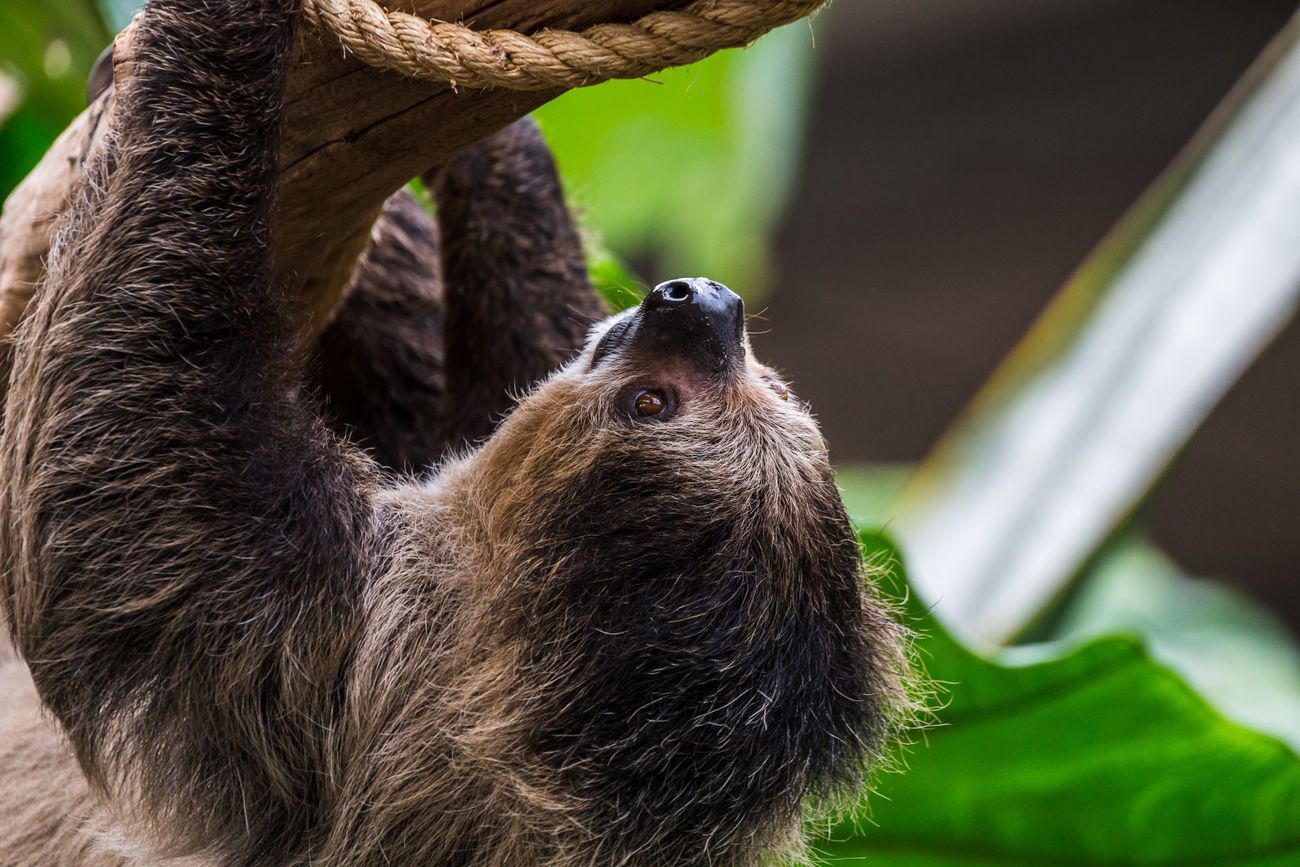
Habitat destruction
Sloths live in rainforests and spend almost all of their time in trees, using them for camouflage, shade, beds, and as their source of food. Without trees, sloths in the wild can’t survive—which means they’re highly vulnerable to deforestation. Deforestation is a primary threat to all six species of sloth. Their homes are destroyed for various reasons, such as tourism, timber harvesting, livestock grazing, agriculture, and more.
Human expansion cuts through the sloth’s habitat at random, turning large areas into smaller, isolated pockets. When this happens, the sloths can no longer access the cut-off areas and are forced to continue as smaller subpopulations. This is problematic for reproduction and can cause reductions in gene flow due to forced inbreeding.
Poaching
Despite all of the factors that make sloths highly unsuitable as pets, they are poached and sold in the illegal pet market. This trade is growing fast across Central and South America with thousands of baby sloths taken from the wild-many torn from their mothers. Because they move so slowly, it can be very easy for hunters to catch sloths if they manage to spot one. Unlike other predators, humans are aware of the sloth’s camouflage tricks and know what to look for. Additionally, reproduction rates for sloths are low, and successful reproduction in captivity is rare. Social media continues to fuel and normalise the exotic pet trade and animal interactions, but the sad reality is that only 10% of those taken from the wild manage to survive.
Sloths are also sometimes hunted for food, though this is less common.
FAQs
What do sloths eat?
All species of sloths are folivores—animals that primarily eat foliage (leaves). The sloth diet includes leaves from over 90 different kinds of trees, though individuals tend to stick to between six and 12 personal preferences. Although sloths are often associated with the Cecropia tree, in reality, they require a lot more diversity in their diets to be healthy.
Different types of leaves build up various defence systems to protect them against folivores, such as tough cell walls and chemicals that build up over time and become toxic. To combat these problems, sloths generally feed on new leaves at the end of branches because they’re still soft and not yet toxic. Eating a variety of leaves also prevents them from ingesting too much of one type of toxin.
Because of their slow digestion, sloths don’t eat that much day to day. The leaves stay in their systems for so long that their stomachs stay full and can’t fit many new leaves inside. For three-toed sloths, the average amount of leaves eaten each day is 73.5 grams.
How many sloths are left in the world?
Population estimates for most of the six sloth species are not available because the animals are so difficult to survey. However, the IUCN shows that all six species have a decreasing population trend. The critically endangered pygmy sloth only lives on one tiny island off the coast of Panama, and it’s believed that only about 100 individuals remain.
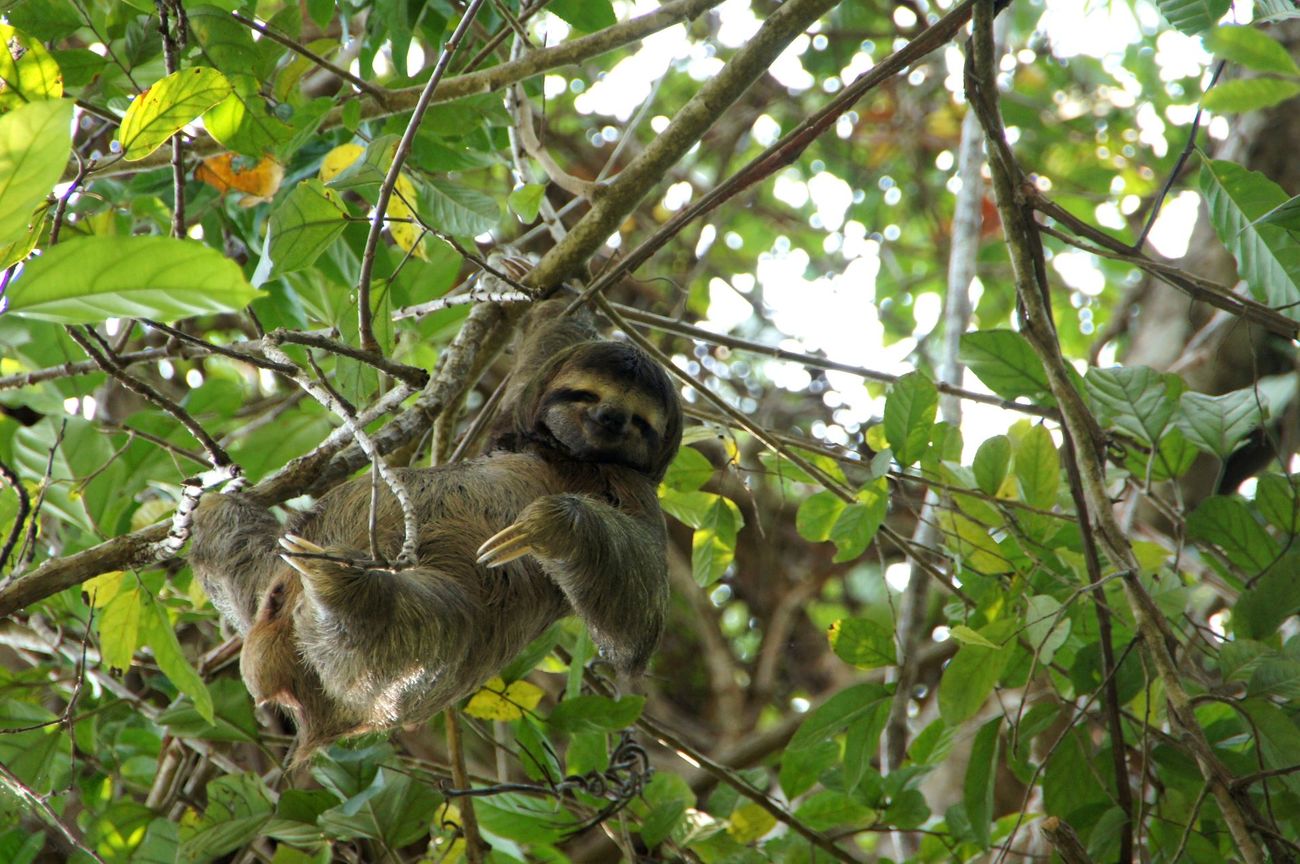
How much does a sloth weigh?
Although the six species of sloth are similar in length, their weights can vary from around 3.6 kilograms to 7.7 kilograms. Even the lightest sloths appear bigger than they are because of their thick fur, but their frames are quite small and skinny, with very little muscle mass. Their weight also fluctuates significantly when they relieve themselves—because they only go once a week, they can excrete as much as a third of their body weight in one sitting.
How big are sloths?
Modern sloths are around 0.6 to 0.8 metres long, with brown fur, long arms, and long curved claws. However, sloths were once much bigger—the giant sloth, an ancient ancestor of modern sloths, stood three and a half metres tall. Since it could stand on its hind legs, it was the largest bipedal mammal to ever exist and weighed up to four tonnes.
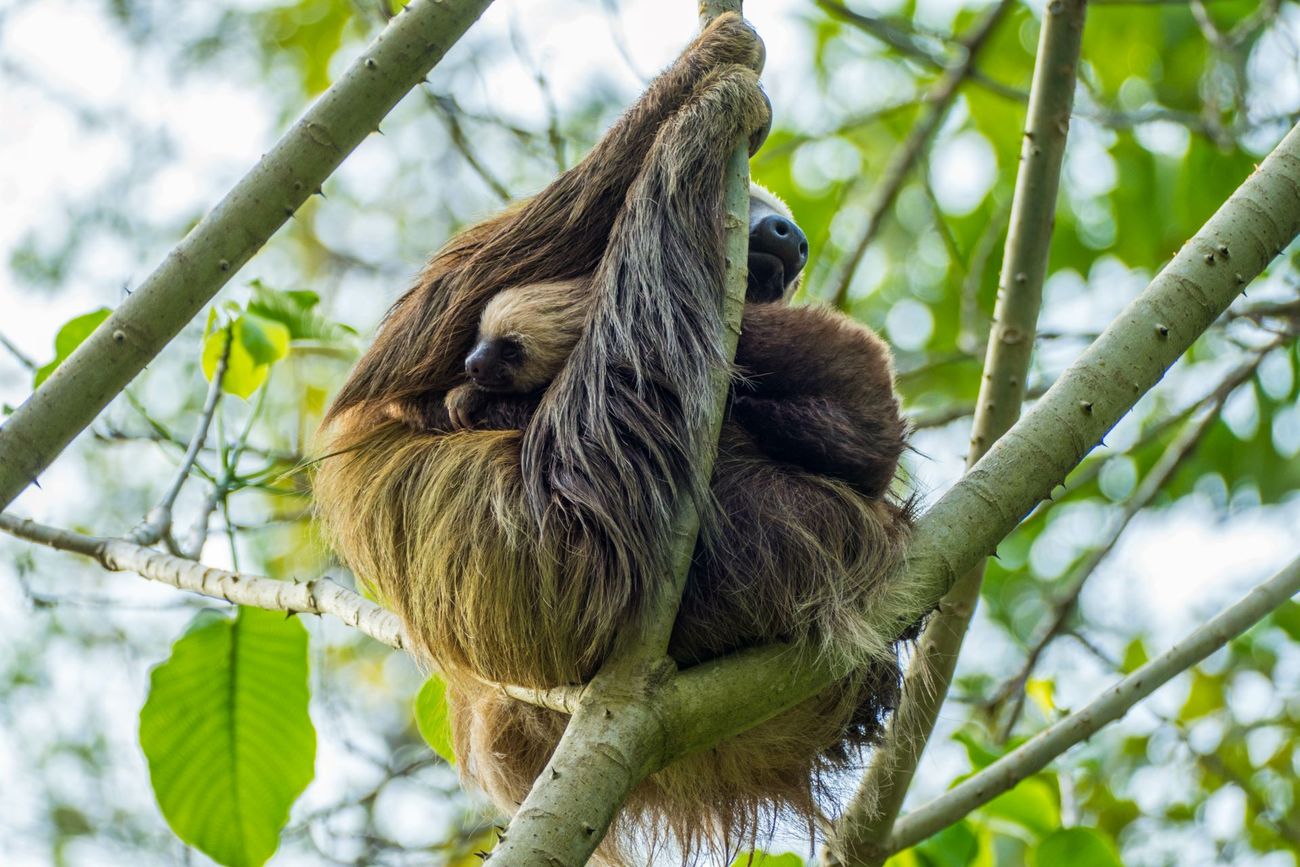
Why are sloths endangered?
The main threat facing all species of sloths is habitat loss due to human development. The rainforests in South and Central America on which sloths rely are currently being cleared in various locations to make room for agriculture, tourism, livestock, and urban expansion. Sloths are also vulnerable to poaching, occasionally for meat but mostly for the illegal pet trade or for tourist attractions.
Some sloths may see relief from trafficking thanks to a new proposal that will be discussed at the upcoming CITES convention in fall 2025. Brazil, Costa Rica, and Panama have proposed listing two species, Hoffmann’s two-toed sloth and Linnaeus’ two-toed sloth, under CITES Appendix II. This would restrict international trade in these species and their parts. A CITES listing is urgently needed to help prevent sloths being traded in numbers that will drive their wild populations into decline.
How long do sloths live?
No one has ever tracked a sloth in the wild from birth to death, and there are no physical indications scientists know of that can help them guess the age of an adult sloth. Because of this, we don’t know how long sloths live in the wild.
We do know how long they live in captivity, but because sloths typically don’t thrive outside of their natural habitat, it’s assumed that they live much longer in the wild. The oldest sloth in captivity is currently 50 years old. Sloths in the wild could live a decade longer or even double this number, but there’s currently no way to find out because they’re so elusive.
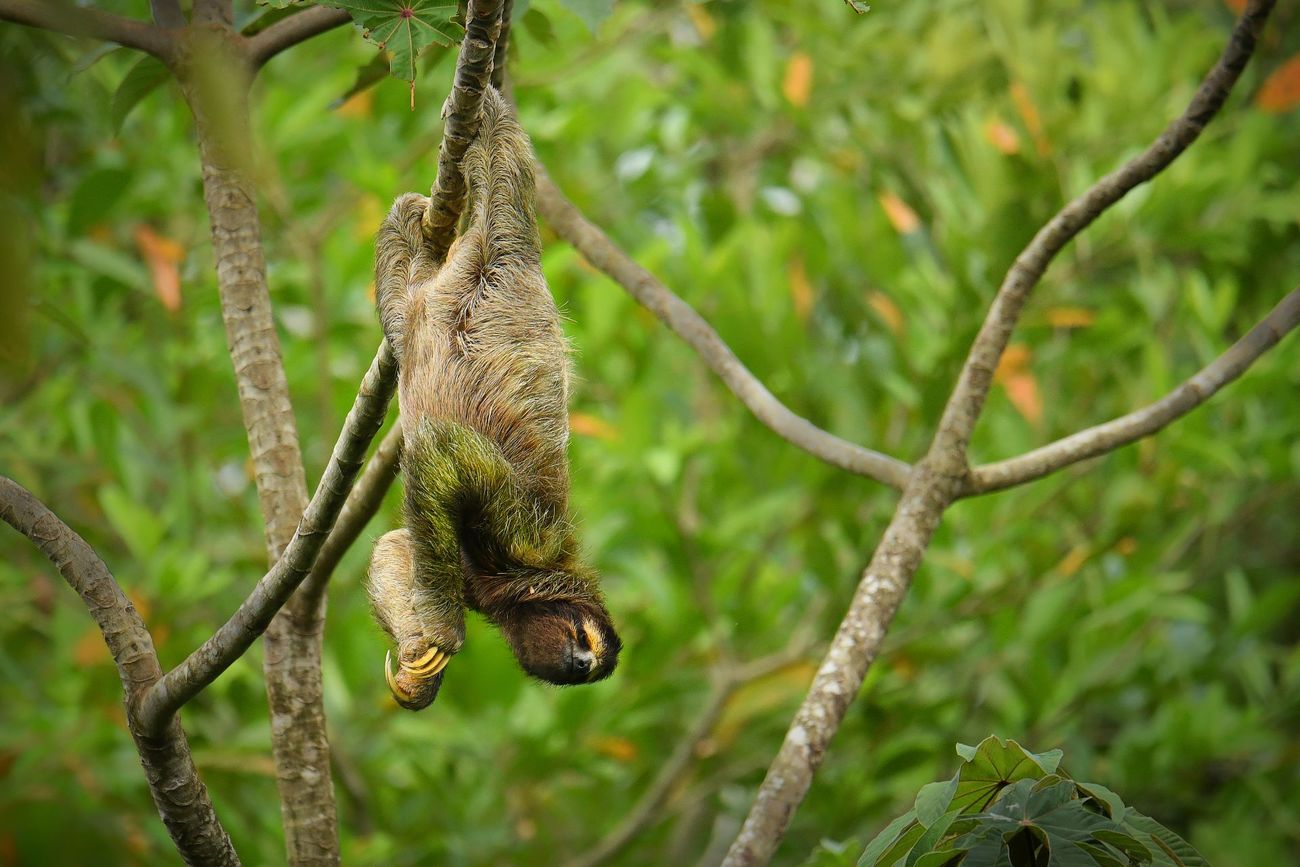
Why are sloths slow?
The main reason for a sloth’s lethargic movement is its specialised metabolism. They live off low-calorie vegetation that their bodies turn into energy at a very slow speed. Their metabolic rate is about 40-45% of the average speed expected in a mammal their size, and it can take anywhere from 157 to 1,200 hours for a sloth to metabolise and excrete a leaf it eats.
This means that their energy stores are constantly limited, and they have to be careful to ensure they always have enough energy to find, collect, ingest, and metabolise their next intake of food. The solution is to move slowly and restrict activities to a very small home range. They have also sacrificed the energy-intensive activity of thermoregulation, instead basking in the sun to raise their body temperature or sleeping in the shade to cool down. They even depress their metabolism in hot weather to avoid creating extra heat when they’re trying to stay cool.
Another reason for their slow movement is poor eyesight. Although sloths haven’t always been tree-dwellers, when they moved up into the trees as almost-blind animals, they had to take things slow to avoid falling.
Because sloths move so slowly, they have also lost their muscle mass over time. They now have just 30% of the average muscle mass for a mammal of their size. As a result, they have become physically restricted to the slow speeds they utilise as a survival strategy.
They also use their slowness to hide from predators, moving so slowly that birds and big cats fail to notice them.
How are sloths affected by climate change?
The body temperature of sloths is affected by the ambient temperature of their surroundings, and this influences their metabolic rate. As climate change raises ambient temperature across the globe, it could trigger changes in sloths’ lifestyle.
Climate change also has the potential to change sloths’ habitats. It can affect the type of vegetation that grows in the rainforests, possibly leading to lower food availability or improved agricultural potential that could prompt human development. Climate change can also cause unpredictable severe weather such as prolonged drought and wildfires, which can lead to high mortality rates for sloths in affected areas.
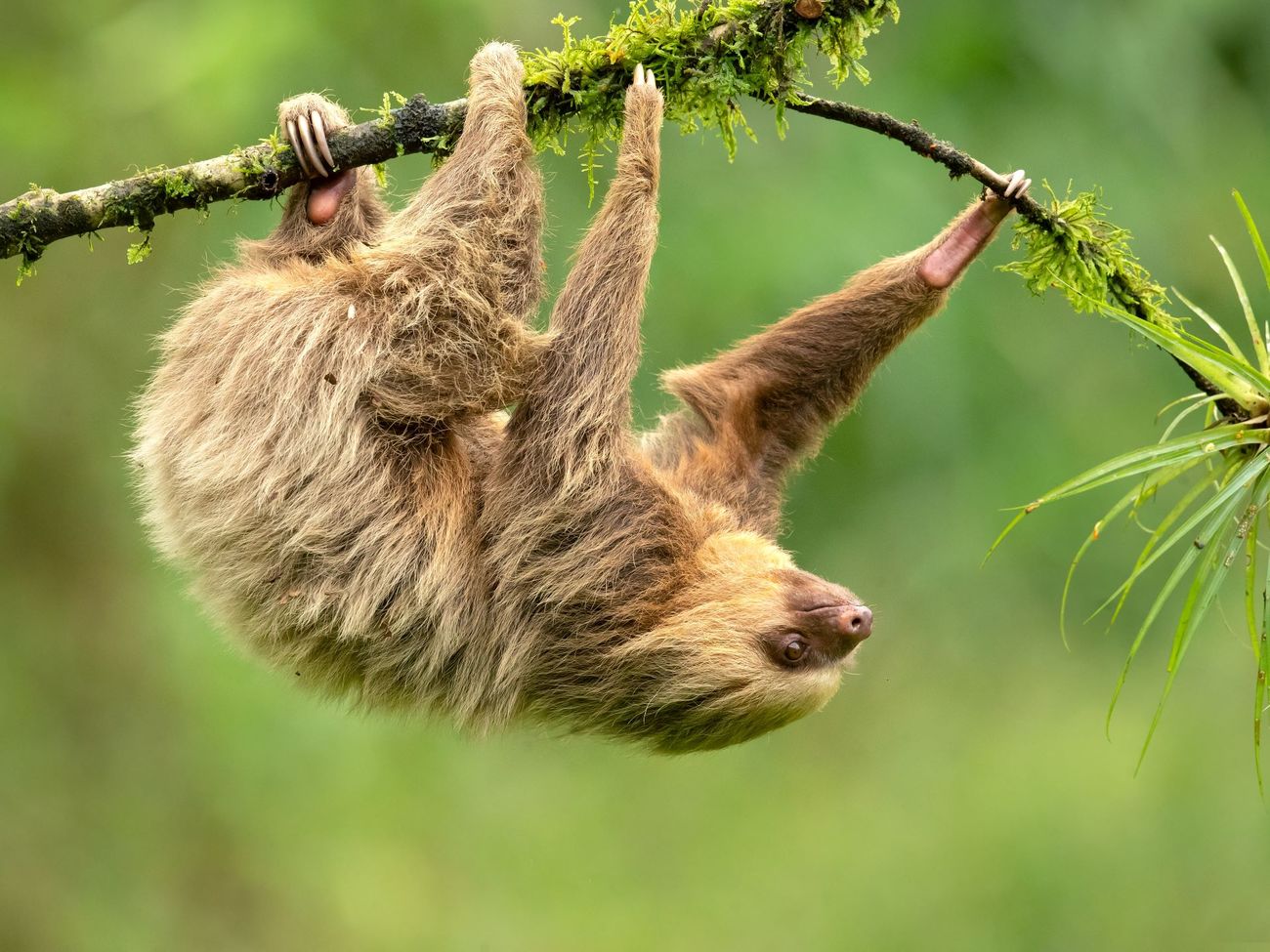
How can you help?
One of the easiest ways you can help is by not contributing to the exotic pet trade and exploitative industries like sloth encounters and photo ops. Sloths are not good pets. Educate yourself and those around you. Stopping demand is the most effective long-term method of decreasing animal trade.
You can also support conservation organisations like IFAW that help protect sloths and their wild habitats.